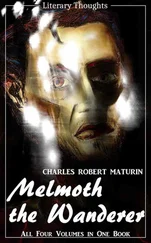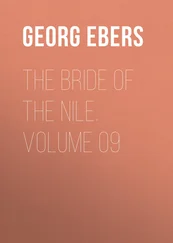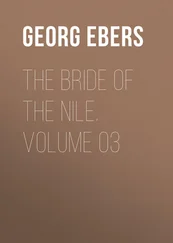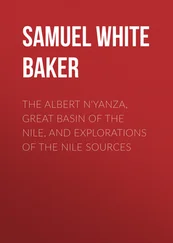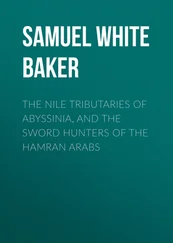Charles Warner - My Winter on the Nile
Здесь есть возможность читать онлайн «Charles Warner - My Winter on the Nile» — ознакомительный отрывок электронной книги совершенно бесплатно, а после прочтения отрывка купить полную версию. В некоторых случаях можно слушать аудио, скачать через торрент в формате fb2 и присутствует краткое содержание. Жанр: Путешествия и география, История, foreign_edu, foreign_antique, foreign_prose, на английском языке. Описание произведения, (предисловие) а так же отзывы посетителей доступны на портале библиотеки ЛибКат.
- Название:My Winter on the Nile
- Автор:
- Жанр:
- Год:неизвестен
- ISBN:нет данных
- Рейтинг книги:5 / 5. Голосов: 1
-
Избранное:Добавить в избранное
- Отзывы:
-
Ваша оценка:
- 100
- 1
- 2
- 3
- 4
- 5
My Winter on the Nile: краткое содержание, описание и аннотация
Предлагаем к чтению аннотацию, описание, краткое содержание или предисловие (зависит от того, что написал сам автор книги «My Winter on the Nile»). Если вы не нашли необходимую информацию о книге — напишите в комментариях, мы постараемся отыскать её.
My Winter on the Nile — читать онлайн ознакомительный отрывок
Ниже представлен текст книги, разбитый по страницам. Система сохранения места последней прочитанной страницы, позволяет с удобством читать онлайн бесплатно книгу «My Winter on the Nile», без необходимости каждый раз заново искать на чём Вы остановились. Поставьте закладку, и сможете в любой момент перейти на страницу, на которой закончили чтение.
Интервал:
Закладка:
Whatever it was, it is a most unpleasant place to go into. But we wanted one idea of’ Cimmerian darkness, and the sensation of being buried alive, and we didn’t like to tell a lie when asked if we had been in, and therefore we went. You will not understand where we went without a diagram, and you never will have any idea of it until you go. We, with a guide for each person, light candles, and slide and stumble down an incline; we crawl up an incline; we shuffle along a level passage that seems interminable, backs and knees bent double till both are apparently broken, and the torture of the position is almost unbearable; we get up the Great Gallery, a passage over a hundred and fifty feet long, twenty-eight high, and seven broad, and about as easy to ascend as a logging-sluice, crawl under three or four portcullises, and emerge, dripping with perspiration and covered with dust, into the king’s chamber, a room thirty-four feet long, seventeen broad, and nineteen high. It is built of magnificent blocks of syenite, polished and fitted together perfectly, and contains the lidless sarcophagus.
If it were anywhere else and decently lighted, it would be a stylish apartment; but with a dozen torches and candles smoking in it and heating it, a lot of perspiring Arabs shouting and kicking up a dust, and the feeling that the weight of the superincumbent mass was upon us, it seemed to me too small and confined even for a tomb. The Arabs thought they ought to cheer here as they did on top; we had difficulty in driving them all out and sending the candles with them, in order that we might enjoy the quiet and blackness of this retired situation. I suppose we had for once absolute night, a room full of the original Night, brother of Chaos, night bottled up for four or five thousand years, the very night in which old Cheops lay in a frightful isolation, with all the portcullises down and the passages sealed with massive stones.
Out of this blackness the eye even by long waiting couldn’t get a ray; a cat’s eye would be invisible in it. Some scholars think that Cheops never occupied this sarcophagus. I can understand his feeling if he ever came in here alive. I think he may have gone away and put up “to let” on the door.
We scrambled about a good deal in this mountain, visited the so-called Queen’s Chamber, entered by another passage, below the King’s, lost all sense of time and of direction, and came out, glad to have seen the wonderful interior, but welcoming the burst of white light and the pure air, as if we were being born again. To remain long in that gulf of mortality is to experience something of the mystery of death.
Ali Gobree had no antiquities to press upon us, but he could show us some choice things in his house, if we would go there. Besides, his house would be a cool place in which to eat our lunch. We walked thither, a quarter of a mile down the sand slope on the edge of the terrace. We had been wondering where the Sphinx was, expecting it to be as conspicuous almost as the Pyramids. Suddenly, turning a sand-hill, we came upon it, the rude lion’s body struggling out of the sand, the human head lifted up in that stiff majesty which we all know.
So little of the body is now visible, and the features are so much damaged that it is somewhat difficult to imagine what impression this monstrous union of beast and man once produced, when all the huge proportions stood revealed, and color gave a startling life-likeness to that giant face. It was cut from the rock of the platform; its back was patched with pieces of sandstone to make the contour ; its head was solid. It was approached by flights of stairs descending, and on the paved platform where it stood were two small temples; between its paws was a sort of sanctuary, with an altar. Now, only the back, head and neck are above the drifting sand. Traces of the double crown of Upper and Lower Egypt which crowned the head are seen on the forehead, but the crown has gone. The kingly beard that hung from the chin has been chipped away. The vast wig—the false mass of hair that encumbered the shaven heads of the Egyptians, living or dead—still stands out on either side the head, and adds a certain dignity. In spite of the broken condition of the face, with the nose gone, it has not lost its character. There are the heavy eyebrows, the prominent cheek-bones, the full lips, the poetic chin, the blurred but on-looking eyes. I think the first feeling of the visitor is that the face is marred beyond recognition, but the sweep of the majestic lines soon becomes apparent; it is not difficult to believe that there is a smile on the sweet mouth, and the stony stare of the eyes, once caught, will never be forgotten.
The Sphinx, grossly symbolizing the union of physical and intellectual force, and hinting at one of those recondite mysteries which we still like to believe existed in the twilight of mankind, was called Hor-em-Khoo (“the Sun in his resting-place”), and had divine honors paid to it as a deity.
This figure, whatever its purpose, is older than the Pyramid of Cheops. It has sat facing the east, on the edge of this terrace of tombs, expecting the break of day, since a period that is lost in the dimness of tradition. All the achievements of the race, of which we know anything, have been enacted since that figure was carved. It has seen, if its stony eyes could see, all the procession of history file before it. Viewed now at a little distance or with evening shadows on it, its features live again, and it has the calmness, the simple majesty that belong to high art. Old writers say that the face was once sweet and beautiful. How long had that unknown civilization lasted before it produced this art?
Why should the Sphinx face the rising sun? Why does it stand in a necropolis like a sleepy warden of the dead who sleep? Was it indeed the guardian of those many dead, the mighty who slept in pyramids, in rock-hewn tombs, in pits, their bodies ready for any pilgrimage; and does it look to the east expecting the resurrection?
Not far from the Sphinx is a marvelous temple of syenite, which the sand almost buries; in a well in one of its chambers was found the splendid red-granite statue of Chephren, the builder of the second pyramid, a piece of art which succeeding ages did not excel. All about the rock plateau are tombs, and in some of them are beautiful sculptures, upon which the coloring is fresh. The scenes depicted are of common life, the occupations and diversions of the people, and are without any religious signification. The admirable sculptures represent no gods and no funeral mysteries; when they were cut the Egyptian theology was evidently not constructed.
The residence of our guide is a tomb, two dry chambers in the rock, the entrance closed by a wooden door. The rooms are large enough for tables and chairs; upon the benches where the mummies have lain, are piled antique fragments of all sorts, set off by a grinning skull or a thigh-bone; the floor is covered with fine yellow sand. I don’t know how it may have seemed to its first occupant, but we found it an excellent luncheon place, and we could sleep there calmly and securely, when the door was shut against the jackals—though I believe it has never been objected to a tomb that one couldn’t sleep in it. While we sip our coffee Ali brings forth his antique images and scarabæi. These are all genuine, for Ali has certificates from most of the well-known Egyptologists as to his honesty and knowledge of antiquities. We are looking for genuine ones; those offered us at the pyramids were suspicious. We say to Ali:—
“We should like to get a few good scarabæi; we are entirely ignorant of them; but we were sent to you as an honest man. You select half a dozen that you consider the best, and we will pay you a fair price; if they do not pass muster in Cairo you shall take them back.”
Читать дальшеИнтервал:
Закладка:
Похожие книги на «My Winter on the Nile»
Представляем Вашему вниманию похожие книги на «My Winter on the Nile» списком для выбора. Мы отобрали схожую по названию и смыслу литературу в надежде предоставить читателям больше вариантов отыскать новые, интересные, ещё непрочитанные произведения.
Обсуждение, отзывы о книге «My Winter on the Nile» и просто собственные мнения читателей. Оставьте ваши комментарии, напишите, что Вы думаете о произведении, его смысле или главных героях. Укажите что конкретно понравилось, а что нет, и почему Вы так считаете.


